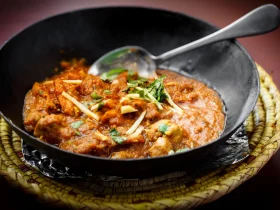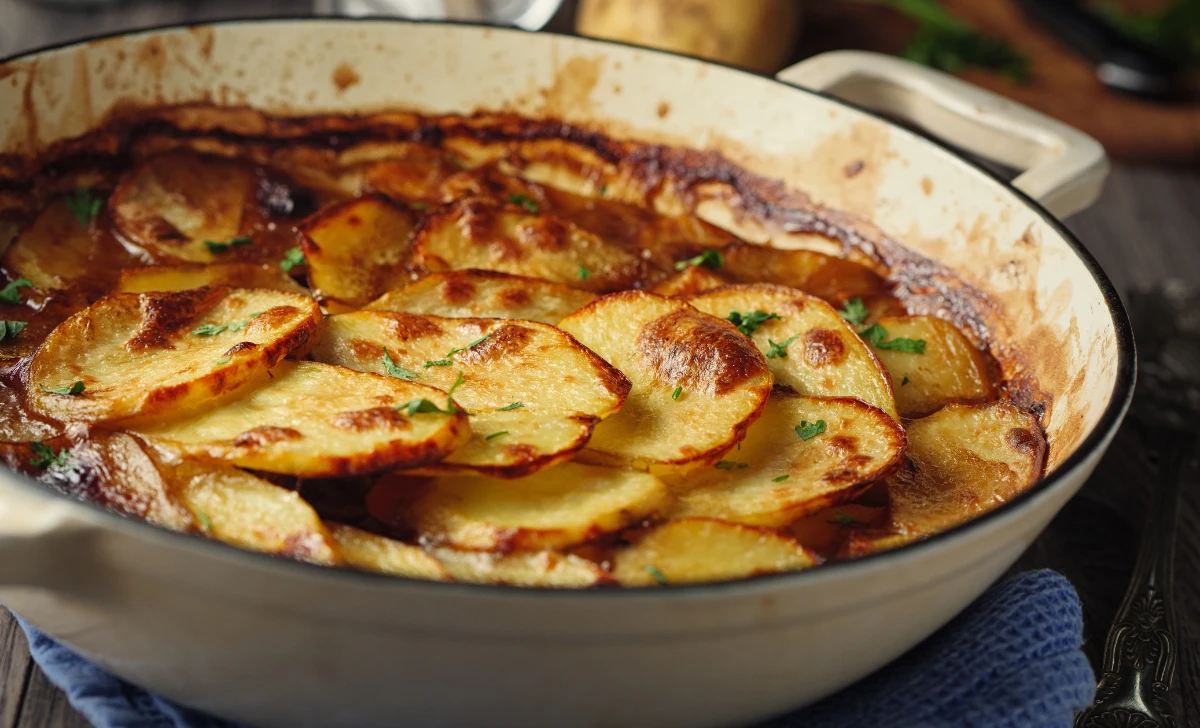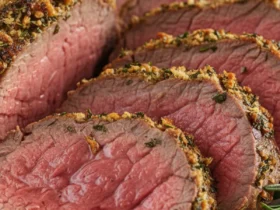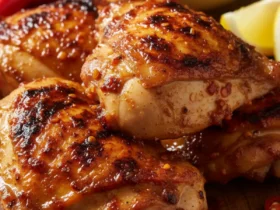There’s nothing quite like the warmth of a home-cooked meal to bring comfort on a chilly evening. One dish that perfectly captures that feeling is the traditional Lancashire Hotpot. This iconic British dish has been satisfying taste buds for generations with its rich flavors and simple, wholesome ingredients. In this article, we’ll dive into the heart of this culinary delight, exploring its history, ingredients, and step-by-step preparation. So, let’s roll up our sleeves and embark on a culinary journey to create the perfect Lancashire Hotpot.
[ez-toc]
History
As we gather around the table to enjoy a piping-hot serving of Lancashire Hotpot, it’s worth taking a moment to delve into the rich history that has shaped this beloved British dish. Lancashire Hotpot is more than just a meal; it’s a journey through time, a culinary tale of working-class creativity and hearty sustenance.
A Glimpse into Industrial England
Travel back with me to the 19th century, a time when the clattering sounds of the Industrial Revolution echoed across England. As factories sprouted and cities bustled with newfound energy, workers were in need of meals that could sustain them through long hours of labor. Lancashire, a northern county known for its bustling textile industry, became the birthplace of a dish that would come to symbolize comfort and resilience.
From Hearth to Table: The Birth of Lancashire Hotpot
Imagine a rustic kitchen filled with the savory aroma of slow-cooked ingredients. The humble origins of Lancashire Hotpot can be traced to such kitchens, where frugality met ingenuity. As household cooks sought ways to create nourishing meals with readily available ingredients, the concept of layering meat, vegetables, and potatoes in a single pot emerged.
A Traditional Melting Pot
Lancashire Hotpot was a dish born of necessity, yet it bore a unique charm that transcended its humble origins. Working-class families would assemble the dish in the morning, then leave it to cook slowly in the hearth while they toiled away. By the time they returned home, tired but hungry, the hotpot would be ready—a warm and hearty embrace at the end of a taxing day.
Culinary Evolution and Cultural Identity
As time went on, Lancashire Hotpot evolved while retaining its core essence. Different households added their own twists and preferences, leading to variations in ingredients and cooking methods. Some used lamb, while others favored beef or mutton. Potatoes remained a constant, forming that iconic crown that defines the dish.
From Local Gem to Global Recognition
While Lancashire Hotpot started as a regional specialty, it didn’t take long for its flavors to capture the attention of palates beyond Lancashire’s borders. As the culinary world expanded, this dish garnered admiration for its simplicity and depth of flavor. It was no longer just a meal for the working class; it was a taste of history, an homage to the generations who found solace and sustenance in its layers.
Preserving Tradition in Modern Times
In an era where convenience often takes precedence, Lancashire Hotpot remains a testament to the enduring power of tradition. While ovens have replaced hearths and cookbooks have replaced word-of-mouth recipes, the essence of the dish remains unchanged. Families still gather to enjoy the comforting layers of meat, vegetables, and potatoes, sharing not just a meal but a connection to the past.
A Culinary Legacy
Today, as we savor the delicious flavors of Lancashire Hotpot, we pay homage to the generations before us who crafted and perfected this dish. With each forkful, we experience a taste of history—a link between the laborers of the past and the diners of the present. Lancashire Hotpot isn’t merely a recipe; it’s a story told through taste, a reminder of the creativity that arises from necessity and the enduring power of comfort food.
So, as you enjoy your Lancashire Hotpot, remember that you’re not just partaking in a delicious meal; you’re participating in a culinary legacy that has woven its way through time, connecting us to the heritage of a bygone era.
Time
| Step | Time |
|---|---|
| Gathering Ingredients | 15 minutes |
| Layering Ingredients | 10 minutes |
| Building Flavors | 5 minutes |
| Crown of Potatoes | 7 minutes |
| Preheating Oven | 10 minutes |
| Embracing the Heat | 2 hours |
| Unveiling the Culinary Masterpiece | – |
| Serving and Enjoying | – |
| Total Cooking Time | Approx. 2 hours |
Ingredients
| Ingredients | Quantity |
|---|---|
| Lean lamb chunks | 300 grams |
| Potatoes | 2 medium-sized |
| Onions | 1 small |
| Carrots | 1 small |
| Fresh thyme | Few sprigs |
| Bay leaves | 2 |
| Salt and pepper | To taste |
Directions
Gathering Your Ingredients
Before you start, make sure you have all your ingredients on hand. This will make the cooking process smooth and enjoyable.
Layering the Dish
Creating the layers is the key to a perfect Lancashire Hotpot. Let’s start building those delicious tiers of goodness.
Layer One: The Potato Base
Begin by thinly slicing the potatoes and placing them at the bottom of your baking dish. This layer will soak up the flavorful juices as the hotpot cooks.
Layer Two: Adding the Lamb
Next, evenly distribute the lean lamb chunks over the layer of potatoes. This is where the magic begins—those tender pieces of meat will infuse the dish with their rich flavors.
Layer Three: The Vegetable Ensemble
Spread the sliced onions and carrots over the lamb. These vegetables will lend a delightful sweetness and depth to the hotpot.
Layer Four: Infusing Flavor
Sprinkle some fresh thyme leaves over the vegetables, and tuck the bay leaves between the layers. These herbs will impart an aromatic fragrance that elevates the dish.
Seasoning Between Layers
Don’t forget to season each layer with a pinch of salt and pepper. This ensures that the flavors are evenly balanced throughout the hotpot.
Crowning with Potatoes
For that iconic Lancashire Hotpot appearance, layer the remaining thinly sliced potatoes on top. This will create a golden-brown crown that’s as pleasing to the eyes as it is to the palate.
Preheating the Oven
Before the hotpot goes in, preheat your oven to 350°F (175°C). This step is crucial for even cooking and maximizing flavor melding.
Into the Oven
Carefully place the hotpot in the preheated oven. As it bakes, the layers will meld together, creating a symphony of tastes and textures.
Embrace the Slow Cooking
Now comes the part that requires a touch of patience. Allow the Lancashire Hotpot to bake for about two hours. The slow cooking process is where the magic truly happens.
Unveiling Your Culinary Masterpiece
After patiently waiting, it’s time to open the oven door and let the aroma envelop you. The hotpot should be beautifully cooked, with the potatoes forming a delightful crust.
Serving and Savoring
Using a ladle, scoop generous portions of the Lancashire Hotpot onto plates. Each bite is a journey through layers of flavor and history.
Equipment Required
Nutrition Information
| Nutrition Information | Per Serving |
|---|---|
| Serving Size | 1/2 of Recipe |
| Calories | 380 kcal |
| Total Fat | 12g |
| – Saturated Fat | 5g |
| Cholesterol | 75mg |
| Sodium | 450mg |
| Total Carbohydrates | 35g |
| – Dietary Fiber | 5g |
| – Sugars | 4g |
| Protein | 30g |
| Vitamin D | 10% DV |
| Calcium | 8% DV |
| Iron | 20% DV |
| Potassium | 15% DV |
Note: Nutritional values are approximate and can vary based on specific ingredients and portion sizes. It’s recommended to consult a nutritionist or use a nutritional calculator for precise information.
Tips
- Choose the Right Cut: Opt for lean lamb cuts, like shoulder or leg, for tender and flavorful meat.
- Uniform Slicing: Ensure your potato and vegetable slices are uniform in thickness. This guarantees even cooking throughout the layers.
- Herb Balance: Don’t go overboard with thyme and bay leaves. A subtle touch of these herbs enhances the flavors without overpowering.
- Layer with Care: Press down gently as you layer the ingredients to avoid air gaps, allowing for thorough cooking.
- Patience is Key: Embrace the slow cooking process. It’s what makes the lamb tender and the flavors meld beautifully.
- Rest Before Serving: Once out of the oven, give your hotpot a few minutes to settle. This makes slicing and serving easier.
Pros & Cons
| Pros | Cons |
|---|---|
| ✔️ Comforting and hearty dish | ❌ Requires relatively long cooking time |
| ✔️ Simple and wholesome ingredients | ❌ May not be suitable for strict vegetarians |
| ✔️ Layers of flavors and textures | ❌ High sodium content due to seasoning |
| ✔️ Customizable with creative variations | ❌ Some may find the lamb flavor strong |
| ✔️ Rich history and cultural significance | ❌ Calorie and fat content may be high |
Conclusion
In the realm of comfort food, Lancashire Hotpot stands as a testament to the power of simple ingredients, rich history, and layers of flavor that unfold with each bite. This classic British dish isn’t just a recipe; it’s a journey back in time, a connection to generations past who found solace and nourishment in its hearty embrace.
As you gather lean lamb, potatoes, onions, and a sprinkle of herbs, you’re not just assembling a meal; you’re weaving together a tapestry of tradition and innovation. The slow-cooking process melds the ingredients into a symphony of taste, creating a dish that warms both body and soul.
But Lancashire Hotpot isn’t bound by tradition alone. With creative variations, you can infuse your own personality into this beloved dish. From vegetarian twists to exotic flavors, the hotpot canvas welcomes your imagination.
So why not embark on this culinary adventure? Whether you’re seeking the comforts of a classic recipe or the thrill of culinary innovation, Lancashire Hotpot beckons you to the table. As you savor the layers of flavor and bask in the warmth of tradition, you’ll not only enjoy a delicious meal but also become part of a legacy that transcends time and borders.
Go ahead, roll up your sleeves, and create your own Lancashire Hotpot masterpiece. Let history, flavor, and tradition converge on your plate, offering you a taste of the past and a present moment of pure culinary delight.
Facts
- 🕰️ A Dish from the Past
- Did you know that Lancashire Hotpot’s roots date back to the industrial revolution? It’s like a taste of history on your plate!
- 🥘 An Early “Crock-Pot”
- Imagine coming home after a long day to a ready-to-eat meal. That’s what workers did with Lancashire Hotpot—they left it to slow-cook while they were at the factories!
- 🧐 The Potato Crown Mystery
- The golden-brown crown of sliced potatoes isn’t just for looks. It helps keep the flavors sealed in while creating a delightful crunch. Double win!
- 🌍 Beyond the Border
- Lancashire Hotpot’s fame isn’t limited to England. It has fans all over the world who’ve fallen in love with its comforting layers of flavor.
- 🎭 Tradition on Stage
- Lancashire Hotpot even has its own place in theatre! In the musical “Oliver!”, the character Nancy sings about a “fine old Lancashire hotpot.” It’s a showstopper in more ways than one!
FAQ’s
Can I use a different meat instead of lamb?
Yes, you can experiment with beef, mutton, or even chicken for a different flavor profile while keeping the essence of the hotpot intact.
Can I make Lancashire Hotpot ahead of time?
Absolutely! In fact, the flavors tend to meld even better if you prepare it a day in advance. Just cover and refrigerate, then reheat before serving.
What’s the best way to reheat leftovers?
Reheat individual portions in the oven or microwave. To retain the crispy potato crown, use the oven at a moderate temperature until heated through.
Can I freeze Lancashire Hotpot?
Yes, you can freeze portions of the hotpot. Let it cool completely, then store in airtight containers or freezer-safe bags for up to 2-3 months.
Can I use a slow cooker for this recipe?
Absolutely! While the traditional oven-baking method is classic, a slow cooker on low heat can yield equally tender and flavorful results with less hands-on time.
How can I make a vegetarian version of Lancashire Hotpot?
Swap the meat with mushrooms, lentils, or plant-based protein. Adjust the cooking time as needed to ensure the vegetables are cooked to your liking.
What’s the history behind the name “hotpot”?
The term “hotpot” refers to the cooking method where ingredients are layered and slow-cooked in a pot. “Lancashire” indicates its regional origin in Northern England.
What can I serve alongside Lancashire Hotpot?
A simple green salad, buttered bread, or even steamed vegetables can complement the rich flavors of the hotpot and provide a well-rounded meal.
Can I use dried herbs instead of fresh ones?
Yes, you can substitute dried thyme for fresh thyme. However, use them in smaller quantities as dried herbs are more concentrated.
Is Lancashire Hotpot suitable for large gatherings?
Absolutely! You can easily scale up the recipe to feed a crowd. Just use a larger baking dish and adjust cooking times accordingly to ensure even cooking.












Leave a Review